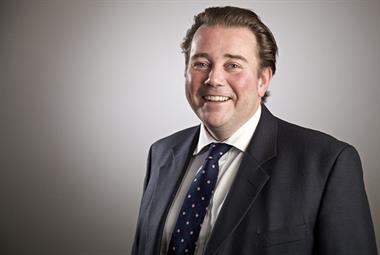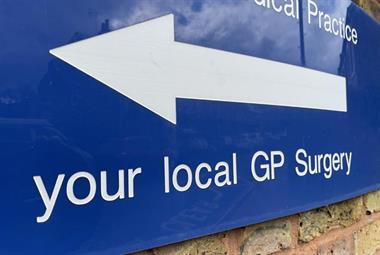Historically AF has been challenging to manage, burdening patients, caregivers, and healthcare systems. In England approximately 1.5m people are estimated to have AF.1
Unfortunately, trends suggest the AF population is expected to grow further – with the number of patients diagnosed per year in England increasing by more than 70% over the past two decades.2 As such, there is an even greater need for primary and secondary care to diagnose AF as early as possible, ensuring all patients are on the most suitable treatment plan, and not experiencing what at times could be avoidable symptoms. With effective treatment there is the potential to improve life expectancy, as well as quality of life.3,4
Fortunately, research continues to uncover new evidence about AF's mechanisms, natural course, and optimal treatment. And as a result, significant progresses are being made in our approach to both diagnosis and treatment, as outlined in the recent NICE AF clinical guidelines (April 2021)5 as well as the European Society of Cardiology guidelines (2020).6
Guidelines also speak to the speed of referral, highlighting the huge importance of early treatment. NICE wants its updated guideline to make a difference by making sure people see a specialist quickly if their first treatment does not help. NICE has suggested a 4-week deadline if initial therapy fails, symptoms reoccur, or if rhythm control is required (more information below).5
Available treatment options
Anticoagulation is used to prevent complications such as stroke, and either rate or rhythm control is required to control the arrhythmia itself.
Rate control works to reduce and regulate ventricular rate and is part of the treatment regimen for most AF patients (those with symptomatic AF).
However, if unsuccessful or the patient has AF with a reversible cause; heart failure primarily caused or made worse by AF; or new-onset AF, rhythm control is recommended.5 This uses specific antiarrhythmic drugs and procedures such as ablation to restore and maintain normal sinus rhythm.
Ablation: key benefits
Ablation blocks the abnormal electrical signals causing the arrhythmia by creating small scars on targeted parts of heart tissue,7 which can be carried out by a catheter – a long tube inserted usually from the groin via a keyhole procedure guided up to the heart.
Advances in ablation technology mean we are now seeing significant improvements in lesion durability and much reduced complications, including pulmonary vein stenosis and phrenic nerve damage.8
Potentially curative, the use of ablation continues to grow, however NICE estimated only 1-2% of AF patients currently receive ablation.5 And in terms of cost-benefits,9 catheter ablation in particular, can reduce the need for unplanned medical visits by up to 80% as compared to before ablation.10
Ablation: NICE recommendations
NICE recommends ablation is considered to restore rhythm after one failed round of drug treatment. Ablation is also recommended if drug treatment is either unsuitable or not tolerated by patients with symptomatic paroxysmal or persistent AF.5
NICE explored the clinical and cost-effectiveness of different ablative technologies and found that radiofrequency point-by-point (RF PP) ablation to be more cost effective over a lifetime than either antiarrhythmic drug (AAD) treatment or other ablation strategies.5
NICE expects these recommendations to mean more people are offered RF PP ablation, although it recommends cryoballoon or laser balloon ablation if RF PP is unsuitable.5
Ablation: reducing the risk of progression
If left untreated, 1 in 5 patients progress from paroxysmal (intermittent) to persistent (sustained) AF within 12 months, placing them at risk of anxiety and depression, increased pain, poorer mobility and self-care problems.11-15
For paroxysmal AF patients, access to catheter ablation reduces their risk of progression to persistent AF compared to patients treated with AADs.16 And, crucially, the efficacy of some catheter ablation technologies is such that in one study 94% of patients were free from arrythmia recurrence at 1 year and less likely to experience AF related complications compared to drug therapy over 2 years of follow-up.17,18
Meta-analysis has revealed that catheter ablation was more successful (27% lower risk in AF recurrence post-ablation) when the procedure was performed within a year of diagnosis.19 This has clear implications for AF management, reinforcing the NICE recommendation for timely referral.
- Professor Andre Ng is professor of cardiac electrophysiology, consultant cardiologist and electrophysiologist at the University of Leicester
| Biosense Webster |
|---|
At Biosense Webster, Inc. we have one goal — to ensure those with cardiac arrhythmias can live the lives they want. This means transforming the latest advancements in electrophysiology into a suite of tools that empowers physicians with a range of treatments for the best outcomes. All links to external website links are being provided as a convenience and for informational purposes only, Johnson & Johnson Medical Devices bears no responsibility for the accuracy, legality or content of the external site or for that of subsequent links. Contact the external site for answers to questions regarding its content. This article was initiated, funded and reviewed by Biosense Webster |
207566-220323 EMEA_UK
© Johnson & Johnson Medical NV/SA 2022
References
- Public Health England. National Cardiovascular Intelligence Network Atrial Fibrillation Estimates. December 2019. Available at: https://assets.publishing.service.gov.uk/government/uploads/system/uploads/attachment_data/file/879448/AF_prevalence_estimates.xlsx Accessed March 2022.
- Wu J, Nadarajah R et al. Temporal trends and patterns in atrial fibrillation incidence: A population-based study of 3.4 million individuals. The Lancet Regional Health - Europe 2022;00: 100386.
- Bunch TJ, May HT, Bair TL, Johnson DL, Weiss JP et al. Increasing time between first diagnosis of atrial fibrillation and catheter ablation adversely affects long-term outcomes. Heart Rhythm 2013; 10(9): 1257-62.
- De Greef Y, Schwagten B, Chierchia GB, de Asmundis C, Stockman D et al. Diagnosis-to-ablation time as a predictor of success: early choice for pulmonary vein isolation and long-term outcome in atrial fibrillation: results from the Middelheim-PVI Registry. Europace 2018; 20(4): 589-95.
- NICE. AF: diagnosis and management. Information for the Public. NG196. April 2021 Available at:https://www.nice.org.uk/guidance/ng196/resources/atrial-fibrillation-diagnosis-and-management-pdf-66142085507269. Accessed March 2022
- Hindricks G, Potpara T, Dagres N, Arbelo E, Bax JJ et al. 2020 ESC Guidelines for the diagnosis and management of atrial fibrillation. Eur Heart J 2021; 42(5): 373-498.
- Calkins H, Hindricks G, Cappato R, Kim YH, Saad EB et al. 2017 HRS/EHRA/ECAS/APHRS/SOLAECE expert consensus statement on catheter and surgical ablation of atrial fibrillation. Heart Rhythm 2017; 14(10): e275-e444.
- Mears J et al. The Phrenic Nerve And Atrial Fibrillation Ablation Procedures. J Atr Fibrillation 2009; 2(1): 176. doi: 10.4022/jafib.176
- Keçe, F., Zeppenfeld, K., Trines, S.A. The Impact of Advances in Atrial Fibrillation Ablation Devices on the Incidence and Prevention of Complications. Arrhythm Electrophysiol Rev.2018; 7(3): 169-180. doi: 10.15420/aer.2018.7.3
- Samuel M, Avgil Tsadok M, Joza J, Behlouli H, Verma A et al. Catheter ablation for the treatment of atrial fibrillation is associated with a reduction in health care resource utilization. J Cardiovasc Electrophysiol 2017; 28(7): 733-41.
- Nieuwlaat R, Prins MH, Le Heuzey JY, Vardas PE, Aliot E et al. Prognosis, disease progression, and treatment of atrial fibrillation patients during 1 year: follow-up of the Euro Heart Survey on atrial fibrillation. Eur Heart J 2018; 29(9): 1181-9
- de Vos CB, Pisters R, Nieuwlaat R, Prins MH, Tieleman RG et al. Progression from paroxysmal to persistent atrial fibrillation clinical correlates and prognosis. J Am Coll Cardiol 2010; 55(8): 725-31
- Dilaveris PE, Kennedy HL. Silent atrial fibrillation: epidemiology, diagnosis, and clinical impact. Clin Cardiol 2017; 40(6): 413-418
- Schnabel R, Pecen L, Engler D, Lucerna M, Sellal JM et al. Atrial fibrillation patterns are associated with arrhythmia progression and clinical outcomes. Heart 2018; 104(19): 1608-1614. doi: 10.1136/heartjnl-2017-312569. Epub 2018 Mar 17
- Dudink E, Erkuner O, Berg J, Nieuwlaat R, de Vos CB et al. The influence of progression of atrial fibrillation on quality of life: a report from the Euro Heart Survey. Europace 2018; 20(6): 929-934.
- Kuck KH, Lebedev, D., Mikaylov, E., Romanov, A., Geller, L., Kalejs, O., Neumann, T., Davtyan, K., On, Y.K., Popov, S., Ouyang, F. Catheter ablation delays progression of atrial fibrillation from paroxysmal to persistent atrial fibrillation. ESC Late-breaking Science 2019. Paris, France. August 31, 2019.
- Noseworthy PA, Gersh BJ, Kent DM, Piccini JP, Packer DL et al. Atrial fibrillation ablation in practice: assessing CABANA generalizability. 2019; Eur Heart J 40(16): 1257-1264.
- Phlips T, Taghji P, El Haddad M, Wolf M, Knecht S et al. Improving procedural and one-year outcome after contact force-guided pulmonary vein isolation: the role of interlesion distance, ablation index, and contact force variability in the ‘CLOSE’-protocol. Europace 2018; 20(FI_3): f419-f427.
- Chew DS et al. Diagnosis-to-Ablation Time and Recurrence of Atrial Fibrillation Following Catheter Ablation: A Systematic Review and Meta-Analysis of Observational Studies. Circ Arrhythm Electrophysiol 2020;13(4):e008128. https://doi.org/10.1161/CIRCEP.119.008128













.jpg)
